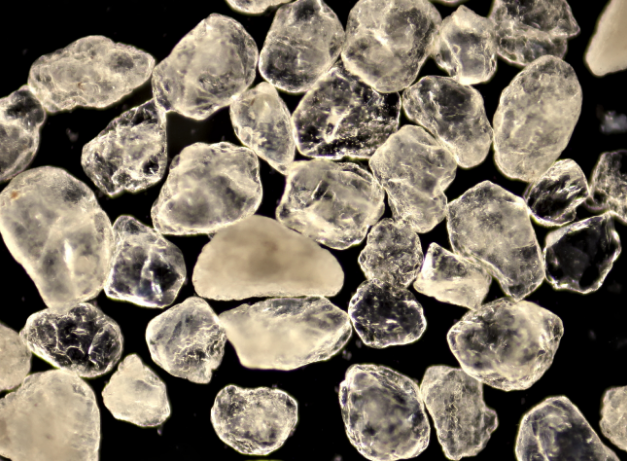Introduction to the world of microscopic observation
Have you ever wondered what secrets lie hidden in a handful of sand? At first glance, it seems like just tiny grains that slip through your fingers. But when viewed under a microscope, an entire universe unfolds before your eyes. The world of microscopic observation invites us to explore the intricacies of nature in ways we never thought possible. From vibrant colors to intricate shapes, the surface characteristics and composition of sand can reveal fascinating insights about our planet’s history and its ongoing processes. Join us on this intriguing journey as we dive into the captivating realm of sand under a microscope. You might be surprised by what you discover!
The composition of sand and its different types
Sand is far from a simple grain. Its composition varies widely based on location, climate, and geological processes. The most common type of sand consists primarily of quartz grains, formed through the weathering of igneous rocks. This durable mineral accounts for its prevalence in many environments.
However, not all sands are created equal. Some contain minerals like feldspar or mica, giving them distinct colors and textures. Coral reefs contribute to white sandy beaches made up of tiny fragments from marine organisms.
Desert sands differ again; they may be finer and more uniform due to constant wind erosion. Volcanic regions can produce black sand composed mainly of basalt particles, creating striking contrasts against blue waters.
Each type reflects its environment’s history and influences the ecosystem surrounding it. Understanding these variances opens up a fascinating exploration into nature’s intricacies hidden beneath our feet.
Setting up a sand sample for microscope observation
To set up a sand sample for microscope observation, start by choosing your sand source. Beach sand, desert sands, or riverbed materials each offer unique characteristics. Select a small amount that intrigues you.
Next, take a clean slide and add a thin layer of the sand. A light dusting will do; too much can obscure details.
Now, carefully place a cover slip over the sample to avoid air bubbles. This step is crucial; it helps maintain clarity during observations.
Adjust the microscope’s settings before peering through the lens. Start with lower magnification to get an overview and gradually increase for finer details. Your setup should allow light to penetrate effectively while showcasing various textures and colors in the grains.
Each grain tells its own story—be prepared to uncover surprises hidden within this seemingly simple material!
What can be seen under a microscope?
When you observe sand under a microscope, you enter a whole new realm of detail. Each grain tells its own story through unique shapes and textures.
You may notice sparkling minerals reflecting light, revealing their vibrant colors. Some grains are smooth and rounded, while others appear angular or jagged.
The sizes can vary dramatically too—from fine particles to larger fragments—each one contributing to the overall composition. You might even spot tiny fossils embedded within certain samples.
Organic matter could surface as well, including bits of shell or plant debris that bring history into focus. This glimpse into the microscopic world reveals patterns often overlooked by the naked eye.
Patterns from crystal structures become pronounced at higher magnification levels, showcasing nature’s artistry in every grain. The variations tell tales of erosion and transportation across landscapes over time.
Discoveries made through sand microscopy
Sand microscopy has unveiled a hidden world teeming with life and diversity. Each grain tells a story, revealing its journey through time from mountains to oceans.
Researchers have discovered tiny fossils nestled within sand particles. These remnants provide insights into ancient ecosystems and climate conditions. Such findings help scientists understand how geological processes shape our environment.
Moreover, the mineral composition of sand can indicate the surrounding geology. For instance, quartz-rich sands often suggest erosion from nearby rock formations, while volcanic sands hint at past eruptions.
Unique shapes and colors emerge under magnification too. Some grains exhibit striking patterns created by natural forces over centuries.
The presence of microscopic organisms like diatoms showcases an entire ecosystem thriving in what seems like simple granules to the naked eye. Each observation opens pathways to new questions about earth’s history and biodiversity.
How sand under a microscope relates to everyday life
Sand under a microscope reveals much more than tiny grains. It connects us to our environment in surprising ways.
Consider beach sand, which carries the history of tides and weather patterns. Analyzing its composition can unveil nearby geological features or shifts in coastal ecosystems.
In urban areas, examining sand can highlight pollution levels. Microscopic particles might tell stories about human activities and their impact on natural habitats.
Even in construction, understanding the properties of sand is crucial. Different types affect building materials’ strength and longevity.
Moreover, educational settings use these observations for hands-on learning experiences. Students become aware of geology while appreciating nature’s complexity.
This seemingly ordinary substance holds clues to environmental changes, societal influences, and even engineering solutions that shape daily life.
Conclusion
Exploring the world of sand under a microscope opens up a new realm of understanding. Each grain tells a story, revealing insights into geological processes and environmental conditions. The composition varies widely, from quartz to feldspar, each offering its unique characteristics.
Setting up your sample for observation is an adventure in itself. With just a few simple tools, you can embark on this scientific journey right at home. Observing the intricacies becomes not only educational but also fascinating as you uncover shapes and colors that are invisible to the naked eye.
What revelations await? Under magnification, you might find mineral crystals shimmering or tiny fossilized remains embedded within grains. These findings contribute valuable knowledge about our planet’s history and ecology.
The implications extend beyond science classrooms; they touch everyday life too. Understanding sand types helps in construction projects and even informs choices regarding beach conservation efforts.
By diving deep into this seemingly mundane material, we unveil layers of complexity that enrich our appreciation for nature’s wonders. Engaging with sand under a microscope encourages curiosity while promoting respect for the environment around us—one grain at a time.


